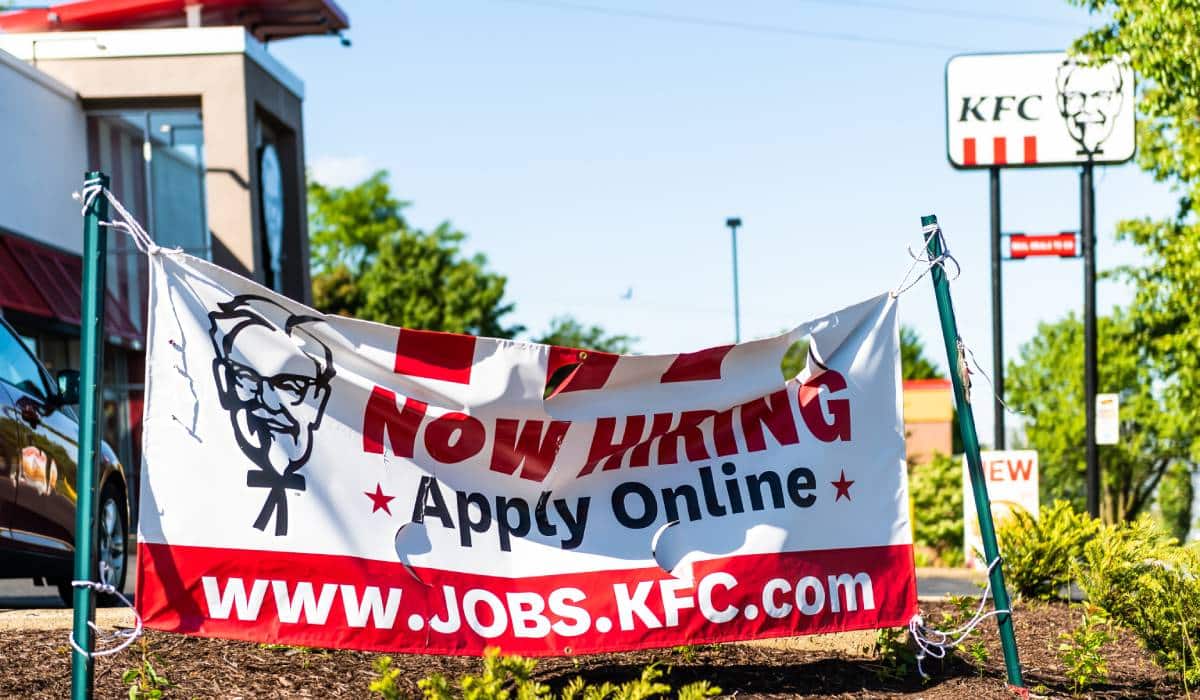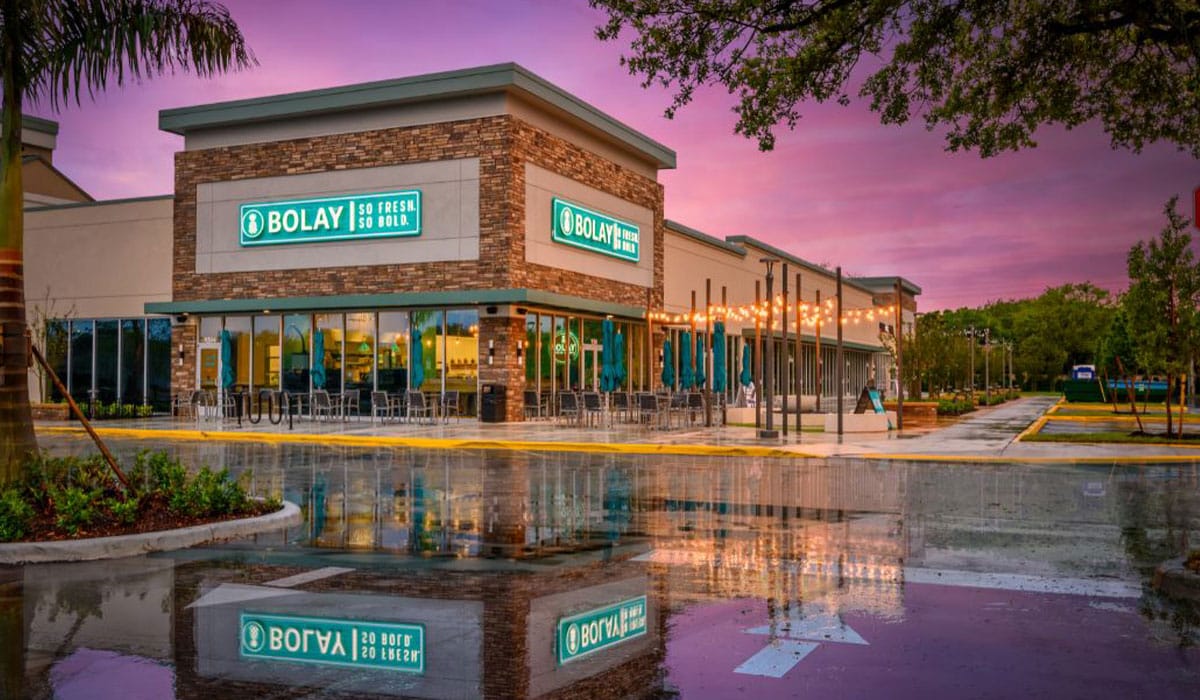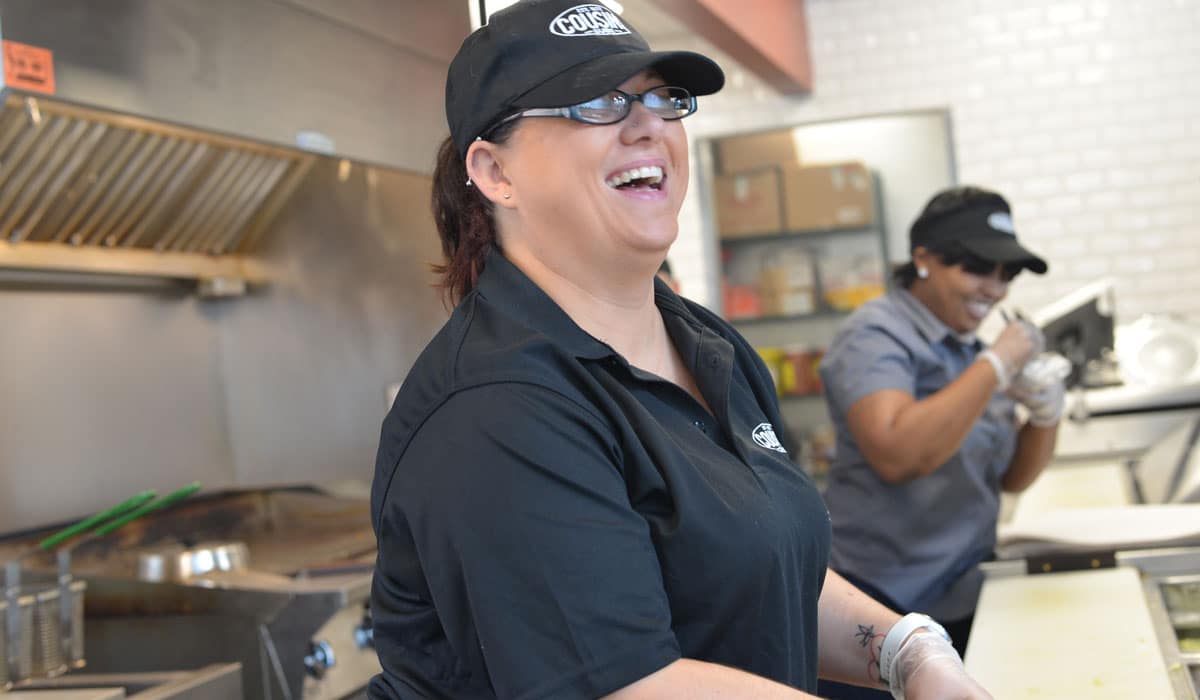Take everything you thought you knew about labor management, all those work ethic rules that were once sacred, and burn ‘em at the stake. Now, the employee holds all the cards.
Customer service, brand integrity, menu consistency—all are subject to the whims and attitudes of employees. And those mediocre employees that would have been fired after their second no-show? You’re texting them to find out what it takes to make them stay: More money? Flex schedules? Benefits and perks?
READ MORE: QSR’s Best Brands to Work For
Desperate times produce decisions of desperation—and that’s never a good thing for business strategies. The labor shortage has impacted restaurant operations in every market, every segment, every daypart—and done so to greater detriment than the supply chain disruptions, inflationary food prices, or restrictive pandemic protocols.
But all is not going up in smoke. The smartest sociologists say that when we reach a crisis point is when we start to become truly creative and innovative. And that’s where we’ve arrived with the labor crisis: At the tipping point for savvy operators to flesh out their silver linings playbook.
Regional brands are figuring out new moves to retain employees, the compromises that are worth considering, and how corporate owners and their franchise partners can share best practices.

The new norm: “constantly hiring”
Cousins Subs
Region: Wisconsin, Illinois, Indiana
Locations: 95 stores; 50 percent corporate-owned; 50 percent franchised
Employees: 40 at corporate headquarters; 750 across corporate stores
“The mass [labor] exodus during COVID is a reality. The estimates I’ve seen say that around 20 percent of restaurant workers left and aren’t coming back; we’re not down 20 percent in staffing, but we’re certainly down 10 to 15 percent,” says Jason Westhoff, president at Cousins Subs.
“Realistically, we’re constantly hiring. I was a CFO for 10 years and I’ve never seen anything like this: it is definitely an employees’ market,” adds Westhoff, who came to Cousins Subs 10 years ago after working with one of the largest franchise groups in Wisconsin, which owned 40 Applebee’s locations and 80 Pizza Hut stores.
“In this industry, 100 percent turnover is really good, and at Cousins we’re running about 120 percent hourly employee turnover—that’s about 13 percent less than where we were at the end of last year.”
Cousins Subs corporate growth model has shifted over the last couple of years and the parent company is buying stores from franchise operators who are looking to exit the system. “We’ve made it known to our franchisees that if they’re interested in selling, we’re interested in buying,” he says.
When he joined Cousins 10 years ago, there were 16 corporate stores; now there are 45, and 20 of those were acquired within the last two years. The number of employees across the company is down, but the average hourly wage is up 16 percent year-over-year, which has reduced Cousins’ profitability by 1.5 percent, and that’s despite the fact that most locations have had to scale back the number of hours they’re open.
“That 1.5 percent would be even worse if we hadn’t [increased] prices as inflation occurred so it’s having a real material impact,” continues Westhoff. “The crazy thing is, even when we’re not working as many hours as we normally would, we’re paying so much more for the employees that it’s having an adverse impact on the bottom line.”
Cousins corporate stores are averaging a 99 percent up-time, meaning that most are open from 10 a.m. to 8 p.m., against the goal of being open 10 to 10.
“Our franchisees are more like 93 percent [up-time], because many are single-unit owners that have to cover extra hours, so they close early to give themselves breathing room. On the corporate side, we have the luxury of being able to shift staff between stores.”
While hourly wages are up significantly, the number of shift hours being covered by Cousins Subs’ salaried employees are also up—and that, Westhoff notes, is where being understaffed has saved Cousins in labor expenses.
“Our standard workweek for a salaried manager is 45 hours, so one week they may work 40 hours and the next week 47 hours because they’re picking up shifts when staff are not available,” Westhoff says. “We’re also paying $100 bonuses per shift for hourly people who are working their regular shift at one store but are willing to work a shift at another store to fill in when workers are out.”
Location, location, location equals labor solution
Multi-unit franchisees also have the option of staff sharing, and Cousins Subs franchisee Tom Jones is one of the lucky owner-operators who has defied the odds and remained open 100 percent of the time, never having to reduce hours. His five franchise units have stayed open seven days a week, 9 a.m. to 10 p.m.
Jones credits loyal staff, teamwork, and the close proximity of his five stores to one another: “All of the stores are within a 15-minute drive of each other, having them geographically close together is why we haven’t had to adjust hours. Even when we had 10 to 15 people out with COVID, employees were willing to go from one store to another.”
Although he also lives within a 10- to 20-minute drive of each restaurant, you won’t find Jones making sandwiches or running the register—but he does stay actively engaged in hiring staff and meeting weekly with his managers. That hands-on leadership is key, and in Jones’ case, it’s a deep-seeded commitment. He’s been part of the Cousins team for 24 years, since his first job as a 16-year-old, through the company’s tuition-reimbursement program that led to a marketing degree and a job at Cousins corporate—and ultimately to purchasing his first Cousins store in 2006.
“I’ve always taken hiring seriously and I’m always looking to acquire new talent; in fact, I’m never not hiring,” Jones says. “It’s better to be overstaffed than understaffed. Although labor has never been higher as a cost, I would rather have a few extra bodies than have employees burn out.”
Part of his HR strategy is making sure the employees he wants to keep are the ones who want to stay. While wages have gone up across the industry, Jones decries the trend to start quick-service workers at $15 to $17 an hour.
“You can’t have these set wages for everyone; I offer what is fair and what I can afford, so I don’t start everybody at $15 an hour. I know my employees’ talent level and if someone is really great I pay them more,” he says. “One thing that distinguishes us from [Cousins] corporate stores and from operators like Jimmy John’s and Jersey Mike’s is that we offer our benefits package to all of our full-time employees.”
Counted among full-time staff is anyone averaging more than 30 hours a week, and they receive paid time off; health, dental, and vision insurance; and 401K with employer match.
“Corporate and the [national] brands gear their benefits packages to full-time salaried managers; our benefits are geared to all full-time employees, including cashiers and sandwich makers who don’t want to go into management or leadership roles—some of these team members have as much tenure as the managers,” Jones says.
He employs 110 people across his five stores and systemwide his franchise group produces $5 million a year, with an AUV of $1 million.
Know when to hold ‘em, know when to fold ‘em
The first step to solving the labor shortage, Westhoff says, is retention. Retaining people is easier than hiring, and it’s especially important to retain the good ones. But even retaining bad employees, until you find someone to replace them, is sometimes necessary.
“There used to be a bottom 20 and a top 20, those days are gone,” he says. Enhanced compensation packages, bonus programs, and flexible schedules are all part of the retention strategy. Even so, it’s an uphill battle: In August, Cousins Subs was looking at hiring 90 managers across the third quarter—roughly one new hire a day.
For frontline staff, two incentives Cousins has recently implemented are daily pay,
which allows workers to capture 40 percent of their wages on a daily basis, and a shift gamification program that rewards employees just for showing up.
Roughly a third of their employees are enrolled in the daily pay program and those participants average taking money out twice a week. There’s no charge to employees if they wait until the day after their shift to take the pay, but there’s a $3 transaction fee if they take it the day of the shift they’re being paid for.
“The shift gamification rewards program is run by a company called Onaroll and employees who are on time for every shift in a week can redeem the rewards for gift cards,” Westhoff says.
It’s an incentive for employees to play the long-game with their jobs, but it’s not cheap, essentially costing Cousins Subs $14 per employee per month.
“It’s a pretty serious expense and when you add it up it equates to a 25-cents per hour raise for all our employees, but we figured it was a better use of the money than giving everybody a 25-cents per hour raise because it rewards employees who are more engaged, and the more engaged employee is typically the better employee, so it’s a good way to retain your good employees,” Westhoff explains.
“We’re just betting on the fact that we’re going to improve our retention rate, or reduce our turnover rate, to the extent that this program pays for itself.”

Retain employees with ownership opportunities
Wetzel’s Pretzels
Region: Nationwide, primarily California
Locations: 350 total, 35 corporate-owned
Employees: 8–12 per store; 2–5 per food truck
Fundamentally, the solution to labor challenges is as simple as giving people what they want. That’s the perspective Wetzel’s Pretzels CEO Jennifer Schuler brings to market.
“People want purpose and autonomy in their work, and they want a path to grow and be paid fairly,” Schuler says. Her plan: Give employees more opportunities to grow within the company.
“Store managers can make great owner-operators,” she says. But many of Wetzel’s best corporate managers didn’t have access to the capital needed to invest in a franchise.
Schuler’s fix: Food truck franchises, much less expensive than a brick-and-mortar store and a great gateway into ownership.
“It’s exciting for employees to have an entry point and food trucks represent a new opportunity for growth, both for the company and for employees to be able to grow but stay within the company,” she says. “Capitalism can be a force for good; a corporate manager can continue to work within the Wetzel’s system and also own her own food truck.”
There was a time late last year and into Q1 2022 that Wetzel’s was having to do more with less, when staffing was running short. By early summer, that had changed and Wetzel’s was again fully staffed in its corporate stores.
“Where we stand apart from other organizations is that the average tenure for our corporate operations team is 10 years. We tend to place strong emphasis on personal growth and on a culture of balance and growth in the company,” Schuler says.
[image source_ID=”131761″]
Work smarter: take labor out of store tasks
Beyond Juicery + Eatery
Region: Ohio, Michigan, and entering Florida
Locations: 40, Two corporate and 38 franchise-owned
Employees: Corporate operation has 37 employees; a typical store has 25–30 employees, primarily part-time
When he looks around the industry at how other brands are reacting to the labor shortage, Mijo Alanis, who co-founded Beyond Juicery + Eatery with his wife Pam Vivio, believes that making fewer employees do more work is not the answer. Neither is closing stores, which creates inconsistency and leads to consumers doubting the brand.
“This is an opportunity for a brand and store location to shine,” he says, noting the prevalence among other brands to reduce hours and overwork staff.
The answer isn’t working harder, it’s working smarter. The question he’s tackled: “How do we eliminate labor from the stores?”
It’s simple things like having prep work done before ingredients arrive at the store, which requires some modification and foresight with packaging, but it enables an employee who was tied up with prepping to work in other areas.
That’s one of his remedies for the current debacle, but another is leveraging technology. Now, one out of two guests are placing orders via the Beyond Juicery app or its in-store kiosks.
“Pre-COVID about 10 percent of our orders came on the app; now at least half the orders are placed that way and it has cut our needs for in-house help by about 50 percent—and I don’t think it has impacted service at all,” Alanis says. “Oh, and the reason guests choose to order from a person is because they want to talk to somebody: Customer engagement matters more than ever.”

Host a hiring party
Cicis Pizza
Region: Nationwide, primarily Southeast region
Locations: 300; 10 units are corporate-owned
Employees: About 275 corporate employees/an average Cicis has 22–30 employees
“In the first quarter, the company was down 3,000 people across the entire brand, but that was fairly common across the industry,” says Jeff Hetsel, president of Cicis Pizza. “We’ve had relatively low turnover—I’ve been with the company 30 years; Walter Rosales, our director of training, has been here 19 years. Still, after Covid, the competition in the quick-service industry was fierce so we had to reevaluate our strategy and understand how critical it is to bring new folks to the brand.”
He credits Rosales for coming up with the solution: Cicis hosted a “Hiring Day” system-wide, with corporate staff joining franchise operators to promote and host the event. Twenty-four hours before Hiring Day, 12,000 applications had poured into the system.
“Operators met with different levels of success on Hiring Day, some hired eight or nine people, others only hired two or three, but we had people in the stores ready to make hiring decisions on the spot,” Hetsel says.
“We divided and conquered the problem, focusing a lot of efforts on stores that were most understaffed because some areas were hit harder. Stores in Orlando, south Texas, and the Eastern [U.S.] were the most short-handed.”
Interviews were held in the restaurants, which stayed open for business throughout the day, and candidates coming in to interview were treated to a drink and the buffet.
“Everyone took part in it—key corporate employees, franchisees, store employees—it was a team effort and we did roughly 40 interviews throughout the day at the restaurants. Since each store has 150 to 200 seats, there was plenty of room,” Rosales says. “When we onboarded the new hires, we started up to three people a day.”
Overall it was a success; and the $100,000 spent in promoting and executing the event was deemed a value with many of the promotional signage remaining in stores to promote hiring year-round.
“We’re definitely going to repeat it, probably the same week in April each year,” Hetsel says. “We had walk-in applicants the day of the event, as well as those 12,000 online applications, and stores continued to have new applicants for days and weeks afterwards.”

Make it easy to work together
Pizza Factory
Region: Seven states, primarily California
Locations: 110, one corporate
Employees: 15 is average at each store
The labor market hasn’t fazed Pizza Factory’s growth. The 110-unit brand has added 21 franchise groups in the past five quarters and Steve Gibbs, vice president of operations, predicts they’ll have 200 stores open within three years.
That’s not to say it’s been easy. One of the biggest challenges they’ve faced is that 64 of their 109 franchise units are single-unit owners. On the positive side, that means they know their employees, but it also has a potential downside: Those owner-operators may not have hired new staff for years, not until the pandemic sent people migrating to live with relatives or looking for greener pastures in other industries.
“The old days of someone walking in the door wanting a job are gone; we’ve done a lot to help educate franchisees on new ways to hire, like using TikTok—and yes, we’re finding adults on TikTok not just kids,” Gibbs says. “If you don’t make it easy to get talent, you won’t have talent. What people want is to send a text that they’re interested, come in for an interview, and get hired on the spot.”
To help incentivize employees to stay, Pizza Factory has a tip-sharing policy. “It’s an unexpected benefit for an employee to make an extra $250 in a week,” he says.
One of the essential positions to keep filled has been delivery drivers, and Pizza Factory has successfully navigated that conundrum by finding business partners to job-share drivers.
“Auto parts stores make great partners; they have drivers deliver parts and those drivers are done by 5, which is when our pizza stores get busy,” Gibbs says. Another job-sharing partner: breakfast restaurants. Their employees may need more hours and the business models of the two dayparts complement each other.
“We’ve been working to attract more multi-unit franchise groups, one of our new franchisees has 20 Wingstop locations. The goal is to synergize and leverage different brands in the same trade area; they already understand the market and they can maintain [efficiencies] with centralized operations,” he says.
Pizza Factory has met the challenges of the labor shortage without flinching, but with most of its stores in California, what concerns Gibbs is the impact that the Fast Food Accountability and Standards Recovery Act will have on the industry. Governor Gavin Newsom signed the bill on September 5, making it the first bill in the country to enact specific rules and standards for fast-food workers.
“Everyone wants to think fast-food workers are underpaid, and that’s really not true,” Gibbs says.
However, one of the tenants of the FAST Recovery Act is that the minimum wage for fast-food workers could increase up to $22 an hour in 2023, almost $7 above the existing minimum wage.







